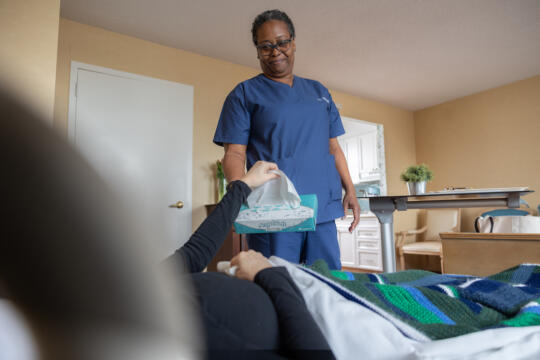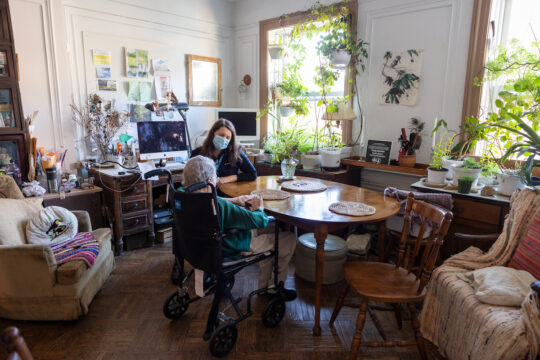Now That’s Teamwork: The Village Behind the My Home Care App
Problem: VNS Health home care patients and family members wanted more information about when their clinician was expected to arrive.
Solution: Why not develop an app that allows patients and family members to see when their scheduled home care visits would be, and who was coming?
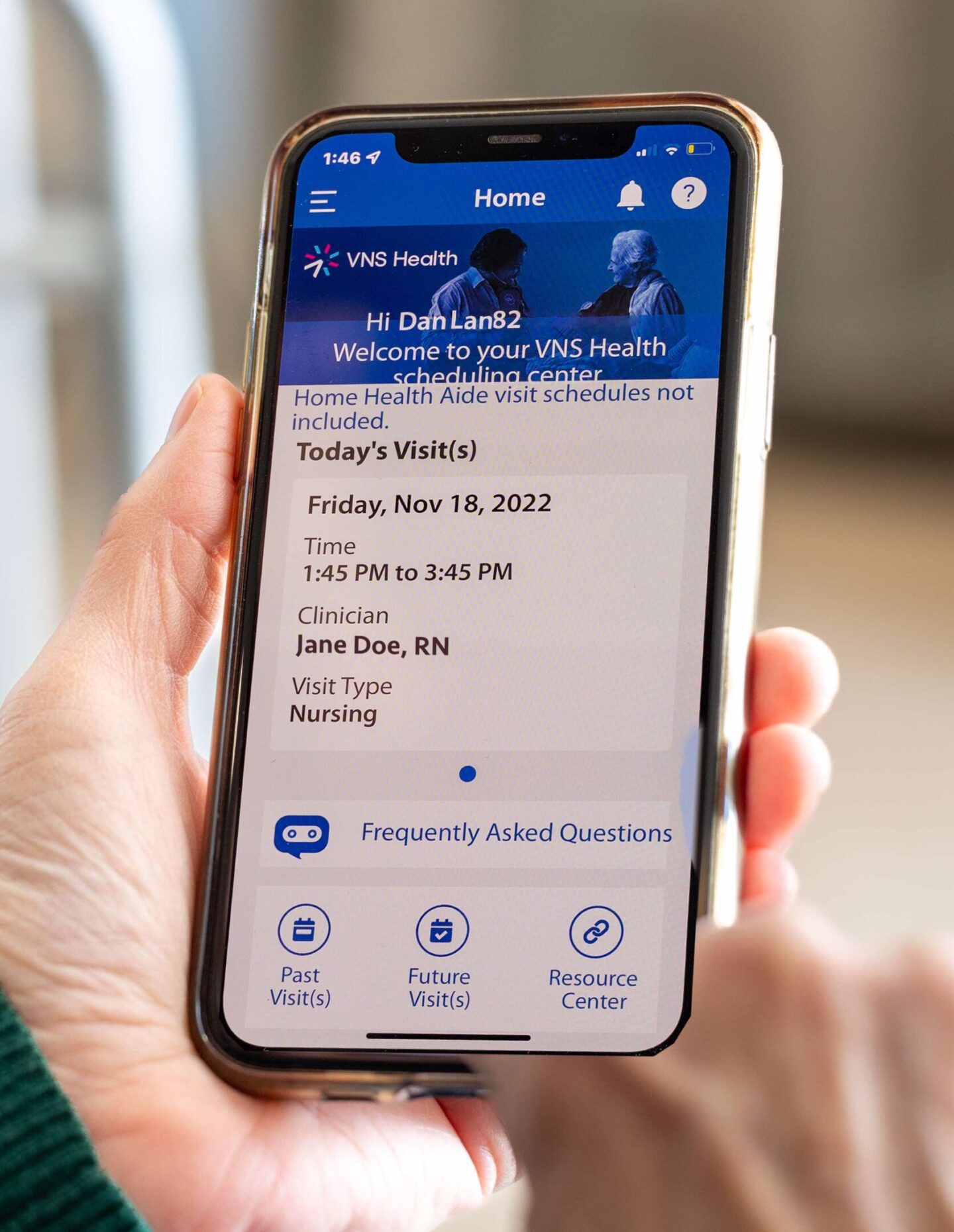
This past October, VNS Health did just that when it launched the My Home Care app. Home Care patients and family members can download the app to their mobile phone or log into an online portal to find out when their next visit from a VNS Health nurse, rehab therapist or social worker will take place. (Information on home health aides will be added in future upgrades.)
They can also use the My Home Care app to receive updates about upcoming visits, provide feedback to VNS Health, and connect to helpful home care information and resources.
Just as it takes a village to raise a child, as the African proverb goes, it took multiple teams across the organization, working together and meeting regularly, to develop the My Home Care app.
Here is the story behind the app and the teams that made it possible.
Getting the Idea Off the Ground: The Project Core Team
In the fall of 2020, a small core team began meeting weekly to move the project forward. They started with an advantage, knowing that the new app would be supported by VNS Health’s recently launched Command Center—a series of dashboards containing real-time information on all home care clinicians’ schedules. The My Home Care app would now be utilizing that same scheduling information to keep VNS Health Home Care patients informed about upcoming visits.
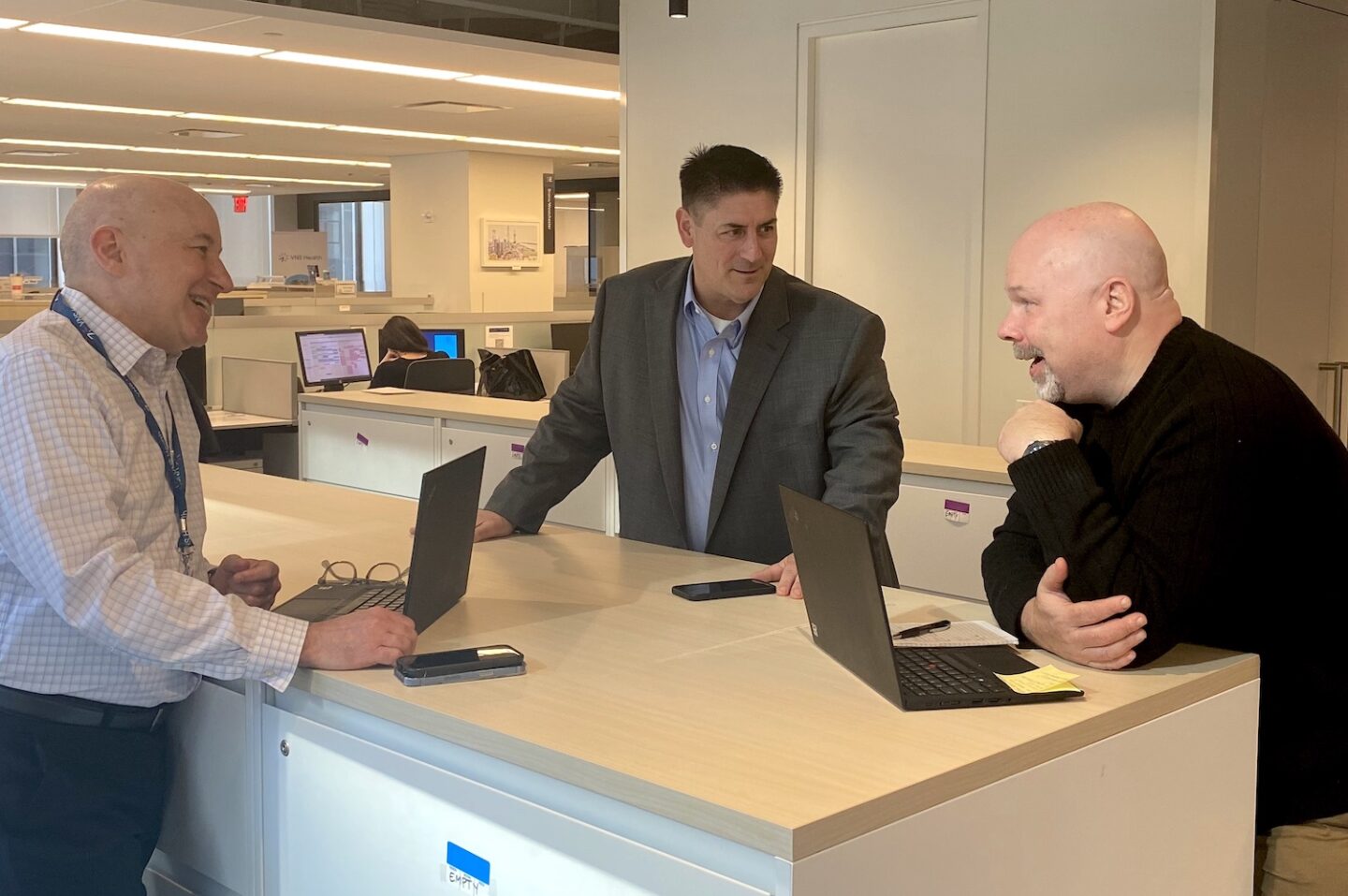
all part of the core team.
The project core team included a team member from IT (Bob Orlando); Performance & Improvement (Lorna Canlas); Digital Marketing (Dan Timoney); and Home Care (Dan Carpenedo). The team also included two Executive Sponsors—Chief Experience Officer Michael Bernstein and then-Chief Information Officer Bob Plaszcz.
“Having two Executive Sponsors on the core team ensured the project had visibility at the highest levels of the organization,” notes Michael. “We intentionally kept the core team small so we could move rapidly. Each person on the core team took responsibility for the work required to move the project forward, and also for sharing information about the project within the organization.”
Talking to the Experts: Those Who Interact with Patients, and Patients Themselves
In early 2021, the two Dans on the core team—Dan Timoney and Dan Carpenedo—began meeting with teams across the organization that interacted regularly with patients to discuss how the app should look and function. These included frontline clinicians, schedulers, branch managers and regional vice presidents—plus team members from Business Development and representatives from IT, as well as VNS Health patients themselves.
“For this phase, we worked hard to gather many perspectives, so we could be sure the app met the key needs of our patients and our own workforce,” says Dan Timoney. “We had multiple project teams interviewing our own team members and patients to learn what they felt were pain points in the scheduling process, and to agree on what the first version of the app should look like.”
Creating the App and Testing It Out
Once the research was concluded, the next step was to develop an initial version of the app. During this phase, which took about eight months, the project’s core team and members of the IT Department—including Sai Nanduri, Systems Analyst, Programmer and Technical Specialist—worked with an outside technology vendor called WinWire, who was hired to engineer the app.
“WinWire built the wireframes—the screen mockups showing what the app would look like on a phone or computer tablet,” recalls Bob Orlando. “We had to do the heavy lifting, though, in terms of deciding what we were actually going to do with this, and then deploying everything into our cloud-based environment, which included putting some levels of security in place. This all required the collaboration of multiple teams on multiple levels.”
The development team worked closely with HomeCare HomeBase as well, since the app needed to interface well with that software platform. This process was led by Christine Facey, a Software Programmer and Technical Specialist with IT’s Data Architecture Services,
As the app’s design took shape, it also went through intensive “user acceptance testing”—in which various VNS Health teams tried the app out and determined that it was to ready to pilot. Teams involved in this testing included IT, Clinical Operations, Marketing, Contact Center Shared Services (CCSS), Quality Assurance and other business stakeholders. Meanwhile, the Compliance team reviewed the design to make sure it met all regulatory and privacy requirements.
Piloting the App with Actual Patients and Family Members
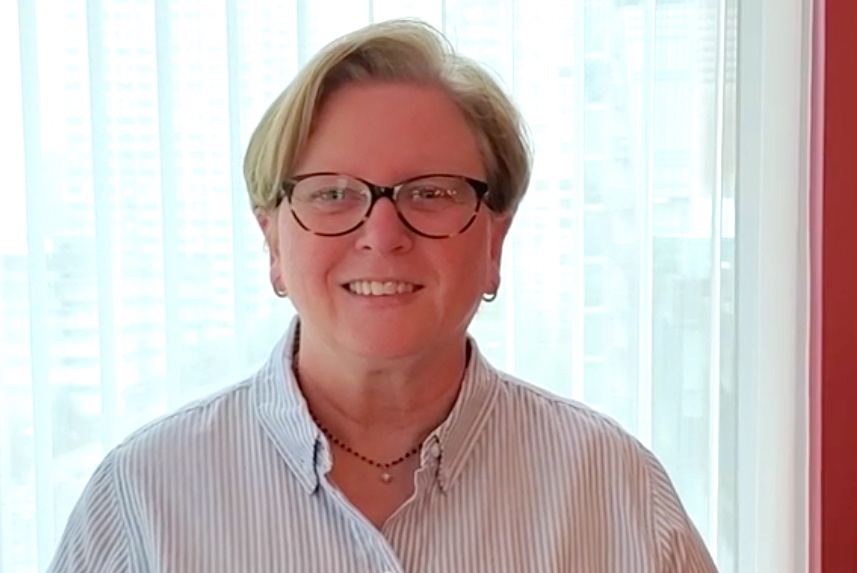
Once everyone on the core team was satisfied that the app was ready for testing in the field, the project entered a pilot phase. During this phase, with input from Business Development and Intake (led by Mary Ann Arneel, BD’s Clinical Director of Intake Services), it was decided to limit the pilot to patients in the Queens region who were discharged to home care from New York-Presbyterian Queens Hospital.
Based on feedback from the 50 patients who tried the app during the pilot phase, plus feedback from the Queens clinical team and the Intake team (who were explaining the new app to patients and encouraging them to try it), the app’s design was simplified and enhanced.
A key step during this phase involved designing and building a consumer registration process. This was a collaborative effort between the IT Development team, led by Bob Orlando, Larry Byrnes, Vice President, Infrastructure Services, and Justin Bain, Vice President and Information Security Officer. “The process they built lets us validate app users by checking that they have a current episode in HomeCare HomeBase,” explains Bob Orlando. “This step also improved our ability to send push notifications to patients and support multi-factor authentication.”
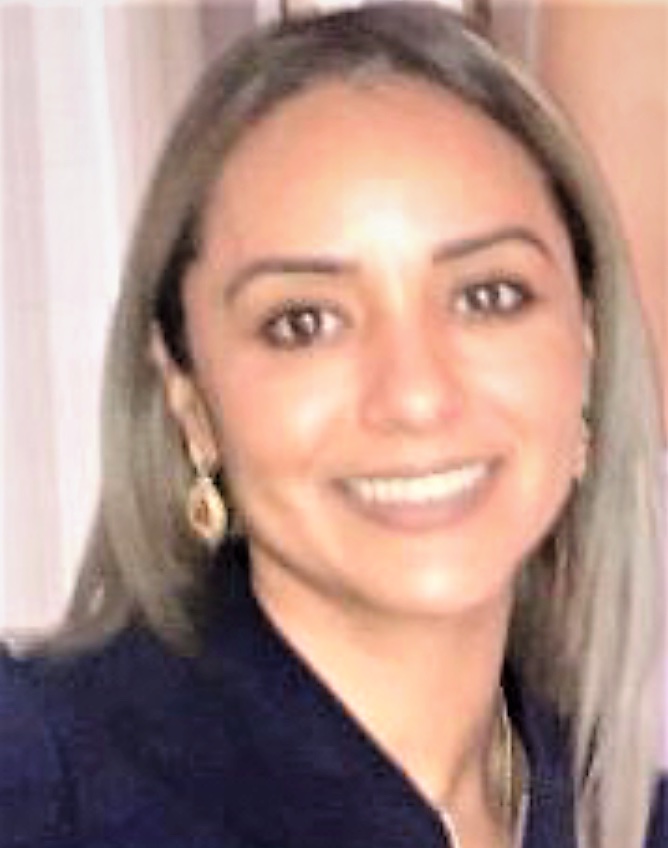
The Contact Center also played a key role during this period. Under the supervision of Cristiana Coronado, Manager, Contact Center Shared Services, five Contact Center agents were assigned to work with the patients involved in the pilot. Fielding calls from patients on a dedicated line, these agents explained how to register for the app, helped troubleshoot any problems patients were encountering, and educated them on the app’s features and benefits. The Contact Center team also reported any app-related issues to Dan Carpenedo and Dan Timoney, who shared their reports with the rest of the core team. “There were some initial hiccups, but based on the feedback we received, they were all ironed out over time,” says Cristiana.
Making the App Secure and Putting It on App Stores
After the pilot was completed in August 2022, the app still had to go through various certifications, including getting approval by Google and Apple to feature My Home Care in their app stores. Steve Sze, Systems Analyst, Programmer and Technical Specialist for IT Enterprise Services, was the main point of contact with the app stores. Meanwhile IT’s security team, led by Justin Bain, conducted their own testing of the app’s security features. This all took about a month.
Launching the App and Working to “Keep Moving It Forward”

Development
In October 2022, after getting approval from the app stores and confirming that the app was secure, the project team was ready to roll out the app out across all of VNS Health Home Care’s regions. This was another organization-wide effort. Under the supervision of Mir Mahmood, Vice President, Intake and Business Development Operations, the entire Intake team had to be educated on how the app worked, and how to encourage and guide patients in using it.
The Marketing team also designed and implemented their own plan to drive patient awareness of the app. In addition, VNS Health’s Clinical Operations teams, field clinicians and office teams got a heads-up that patients would now be using the app, and the team of Contact Center agents assigned to support the app’s use was expanded to 15.
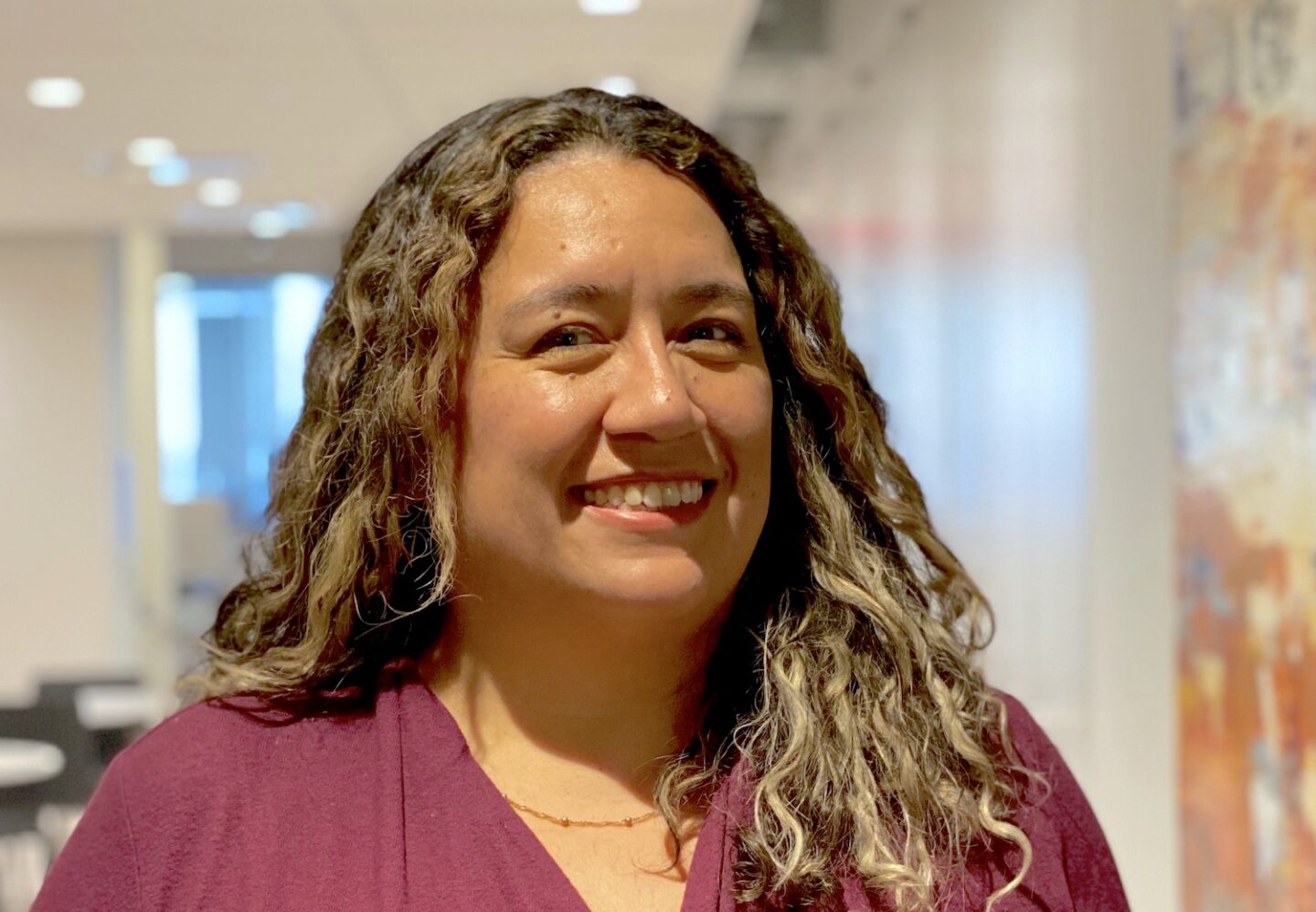
The Education team, spearheaded by Minerva Gamarra, Clinical Education Manager, played a key part in developing the training used in the rollout, while the Clinical Operations, Marketing, Business Development and CCSS teams helped design a strategy for informing the workforce about the new app.
As a result of this intensive One VNS Health effort, several thousand Home Care patients have used the new app, and they report being very satisfied with it. The teams are now employing this same collaborative approach to encourage even more Home Care patients to adopt the app.
“If I had to sum up what made this project a success, it’s that we took the time to know where we’ve been and where we needed to go,” says Dan Carpenedo. “We also realized that there would always be improvements we could make, and that the app was never going to be perfect—so the important thing was to keep moving it forward.”
For additional details, including a video explaining how the My Home Care app works, click here.
